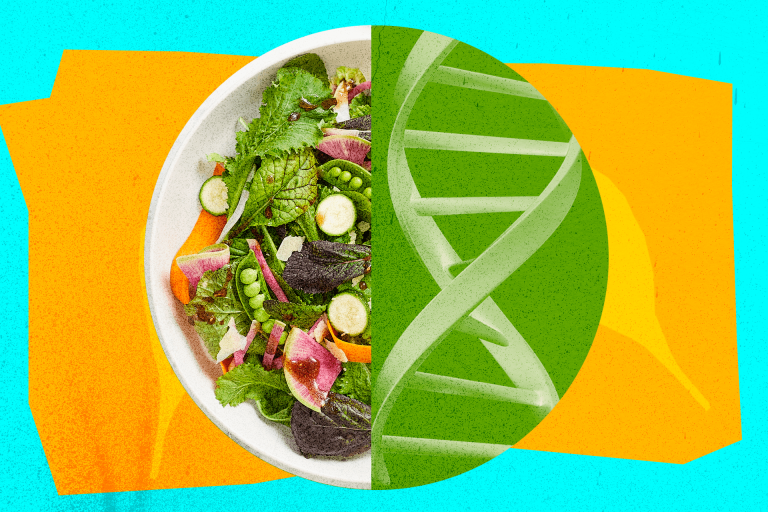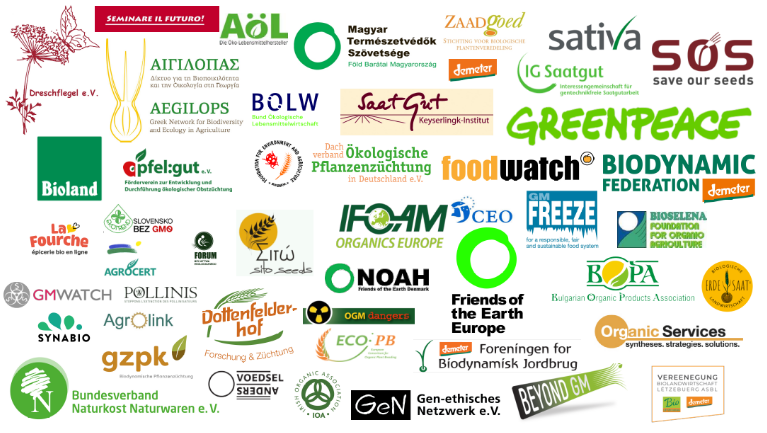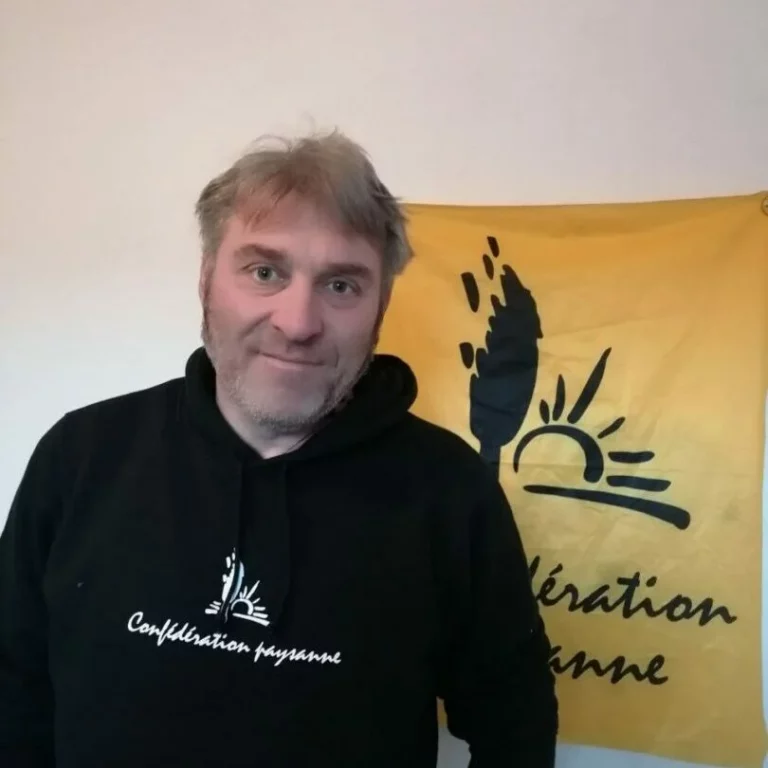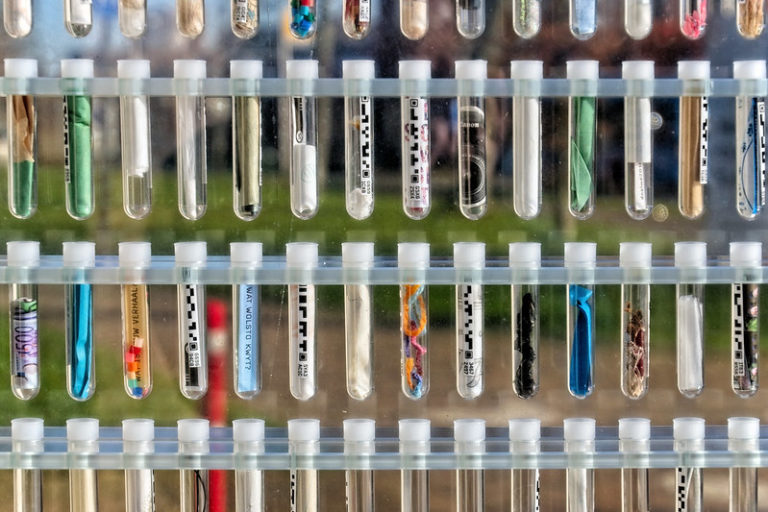News
De Bolster: another Dutch SME under patent threat
In April 2024, Inf’OGM reported on its interview with a Dutch seed company feeling threatened by KWS patents. This is not an isolated case since De Bolster, another Dutch seed company, has had to apply constant legal vigilance for several years to prevent its new varieties from being covered by an ever-increasing number of patent rights, otherwise its survival would be jeopardized. Frans Carree, Director of De Bolster’s Variety Development Department, answered our questions.
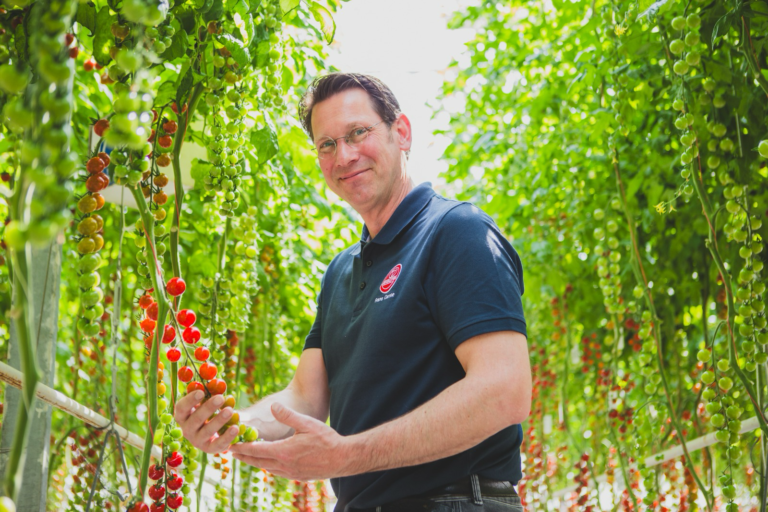
Editor’s preamble: all mutagenesis techniques legally produce GMOs. Whether or not they are regulated GMOs is a question to which the answers vary according to the players involved, particularly with regard to the technical protocols followed, including the cultivation of cells isolated and multiplied in vitro. Following a ruling by the Court of Justice of the European Union in February 2023, the Conseil d’Etat’s interpretation on this point is still awaited in France.
Inf’OGM – Can you tell us about the history of De Bolster?
Frans Carree – The company was founded in 1978 as a developer of organic plant varieties for the local market and for several different types of vegetables and flowers. At that moment we were only working for the home-grown market.
The current owners bought the company in 2007 and started breeding programs for, pumpkins, courgettes and tomatoes. The aim was to enter the professional market. Today we have 330 varieties in our catalogue, which we sell in our webshop and via dealers all over the world.
Today we have 50 employees, 9 of whom work in breeding and the rest in seed production seed cleaning, quality control and sales. So we remain a relatively small company. We are a family owned company and a cooperation with around 1000 members.
Most of our business is in the Netherlands, but we also have a production subsidiary in Moldova. We chose Moldova because the climate is fairly similar to Italy, so good for producing seeds.. Moldova is also a poor country, relatively untouched by pesticides. Which is good if you are working in organic because you have less chance of contamination of our seeds with chemicals.
I have headed the variety development department at de Bolster since 2017. Before that I was a breeder at Rijk Zwaani.
Do you have any flagship varieties?
In recent years we’ve been very successful with our pumpkin varieties, particularly in Western Europe, but we’re currently growing fast in ‘rootstock’ pepper, which is resistant to soil Nemathodes (also Verticillium and Pyrenochaeta) and which is an F1 hybrid. Growers of pepper take the roots of this plant and graft them onto a normal pepper. This makes it possible to market peppers that are resistant to such soil pathogens.
We’ve grown quite rapidly over the last few years, mainly in the professional market. The good thing is that we can now see that certain varieties, such as this pepper variety that we’ve developed, are of interest to certain conventional growers who have problems caused by the substrate in which they grow them. So even conventional growers are switching to our organic rootstock pepper.
At de Bolster you’ve been dealing with a patent issue for several years. Can you tell us about it?
In the mid-2010s, when De Bolster had been bought out three years earlier by the new owners, discussions on the issue of gene and plant patents took place within the company when it decided to move into breeding. Many of the companies concerned have done the same. Our vision is that granting patents on plant material is unethical. We do not want to claim patents on our material and we don’t want to sell varieties with patents.
Then came the famous decision of the European Patent Office (EPO) on the non-patentability of products obtained by essentially biological processes in May 2020 [Editor’s note: decision G3/19 of the EPO’s Enlarged Board of Appeal]. Yet patents are still being granted for invalid inventions, some of which are based on essentially biological processes. A recent Nunhems patent [Editor’s note: EP3464333B1] issued in May 2024 claims a mutant gene found in a population of watermelons treated with mutagenic agents. There is no longer any inventive step, which is a condition for patentability. Such mutants could also be found in wild populations. Another patent issued in May 2024 to KWS [Editor’s note: EP3041345B1] claims the incorporation into a maize plant of a gene from a wild ancestor that can be obtained from a gene bank. As far as I know, all you have to do is cross this ancestor with conventional corn. Furthermore, some of the patents granted on products obtained by essentially biological processes remain valid despite the G3/19 decision if they were filed before July 2017.
So, while we really thought that things were settled with this major decision, this is in fact not the case.We can really see that the European Patent Office is trying to grant as many patents as possible, even helping applicants to use the right wording to get a patent granted. In fact, the patent applications describe that the traits are indeed found in wild ancestors but that it is possible to insert this modification into a variety using techniques such as Crispr/Cas. The patent offices consider that the invention can therefore be obtained by a technical process and issue a patent. And that, of course, is what we don’t want. We think a lot of companies don’t want that, but it’s still happening.
We have the impression that we are starting again today with the same problem that was theoretically resolved by the decision of the Grand Board of Appeal in May 2020. That’s why we are demonstrating and making our voices heard to convince the European Union that more needs to be done than has already been done. Many plant breeders and seed companies want all patents on plants and seeds to be banned, but it’s difficult and complex. It’s not moving fast.
When and what prompted you to take action to make your voice heard?
In fact, things went to extremes when the new deregulation of NGTs was proposed in July 2023 it was on 17 nov 2022 that there was a hearing with DG GROW about NGT’s . We then realized that the next step would be to patent all these NTGs and that we really had to start working again with other breeders like Bingenheimer, Sativa…. We launched a group action with the Dutch organisations Bionext, Demeter, organic supermarket chain Odin, and other small breeding companies (Bionext.nl, stichtingdemeter.nl, odin.nl) with whom we represent the organic movement in Holland. Bionext corresponds to IFOAM at national level. We have tried to convince other people to take action, such as Greenpeace Netherlands, Oxfam Novib and people from Wageningen University, so that we can have a different sound in the market from “we need NTG’s”. We’re working together to find out what we can do together to write opinions. I’ve also been to Brussels twice to inform the European Parliament about this issue and how patents affect small businesses like ours, but also what NTGs will do to the organic farming sector. So we’re following the process of deregulation of NTGs at European level between the Commission, the Parliament and the European Council on patents… We’ve noted that the next presidencies are being entrusted to Hungary and Poland, who are , like us, more prudent about de-regulating, but Denmark, which will follow, is more pro-GMO. We’re not saying that NTGs should be banned, but they should at least be regulated so that people can choose whether or not to buy or use them in their breeding program.
Who are your main contacts in this mobilisation?
We’re trying to talk to everyone, including MPs like the Greens who are on our side, listening to organic farming and small businesses, and who are willing to talk to us. But the right is not inclined to talk. We’re trying to keep the flame burning so that something other than the pro-GMO rhetoric is heard. In the Netherlands, the government is quite pro-genomic editing, like CRISPR-Cas. In fact, they used to be quite ‘pro’, but they’re beginning to see the problems caused by patents and don’t want to see multinationals holding all the patents on genetic resources, NTGs… We also like to show them that small companies like De Bolster can make a big difference on availability of different varieties on the market, also for particular markets that are not interesting for the big players. And thus help keeping biodiversity. We are also clear on the fact that if NTG’s are de-regulated and granting patents will be allowed, we might be forced to stop our activities.
What do you think of the patent strategy of companies like Rijk Zwaan, for whom you have worked?
They have a double face because they don’t want patents on seeds and at the same time they are one of the biggest patent holders. In a way, this is understandable, because if you don’t have patents but they are still granted, it can cost you a lot of money in terms of licences, for example. So companies that are basically not pro-patent protect themselves, But all company’s that work in this way increase the problem for companies like De Bolster, who don’t want any patents on their varieties.
When the subject of plant patents came to the fore, the question for breeding companies was whether any traits could be patented, and if so, which ones. And it was here that a fundamental change in corporate strategy took place. It is important to understand that the companies seeking to obtain patents are not the same as those seeking to produce the right varieties for growers or consumers. They are mainly interested in obtaining patents on interesting traits in order to develop them through licensing or to sell them to other companies. This is really not the right way to develop good varieties, because you lose the agronomic objective. It’s the wrong way of thinking. It reflects the way we look at our seeds and our gene banks: either we try to make the best variety for producers and consumers, or we look for the trait that could be patented. It’s not just the traits that define a good variety; many parameters are interconnected and work together. You have to look at the system as a whole. There are interactions with the soil, the question of irrigation, etc. Developing the right variety is not just a matter of putting a new resistance gene in a particular variety… it’s much more complex.
There are also international licensing platforms created by various large companies such as Enza, Bejo, KWS and BASF. Syngenta has also created its own portfolio of licences with Bayer. Bayer and Syngenta state on their website that small companies with a turnover of less than €5 million, for example, can obtain licences free of charge. But this is “green-washing”, because as soon as licensees leave the research stage or “small business” status, they have to pay. And it is maintaining the system of patents.
How are you integrating these patent issues at de Bolster today?
It actually started a few years ago in 2017with the case of the purple radish. The Koppert Cress company tried to obtain a patent on this radish. We helped opposing the Dutch patent office and won. That was the first time we had problems with a variety, which we sold to different growers. From then on, every time we used our gene-banks, we checked whether any patents existed on the elements contained in our banks. In particular, we look in the Pinto database, but not all patents can be found there. It is becoming more and more complex as the number of patents increases.
Today, for our tomato breeding programme we have this patent issue. The big problem at the moment concerns the trait for resistance to the ‘Tomato Brown Rough Fruit Virus’ (ToBRFV), on which around 20 patent applications have been filed by various applicants, seven I believe. The NGO No Patent on Seeds has published on the subjectii. ToBRFV resistance is almost mandatory for new varieties to have. We are currently working on this resistance problem without knowing which patent will be granted or not. Nor do we really know what these patents cover.
As a general rule, if we identify new resistances in our gene banks, we have to check for each one whether or not it has already been patented. If it hasn’t, we have to make a note of the fact that we found it in such and such circumstances, on such and such a date, etc., and that it doesn’t appear to be patented. But we know that there is a good chance that the resistance trait has been patented and that the patent applications may not yet have been published.
So it’s very difficult to know whether to continue or stop a programme. Can we take the risk of researching something for years if we’re not sure that what we find in our own company’s resources won’t be patented? We’d be working for nothing. And this doesn’t just apply to tomatoes; the same problem applies to all the varieties we work on. So it’s becoming difficult for us to envisage continuing to work in breeding. These are really difficult times.
It can’t be easy to prove that you’ve actually discovered a new trait. How do you go about proving this? It must take you a lot of time, even though this isn’t normally your job?
We don’t really have a choice in the matter. In practical terms, our computers contain our gene banks and all the cross-breeding information. We can indicate that we have found such and such an element in our gene bank, and when we did so. Our computers are like our legal assistants, proving that certain traits have been in our gene bank before a patent was filed.
At this moment we have incorporated in our breeding software the possibility to track all varieties. Everything that goes into our gene pool is checked and registered, so we can always tell with what material our varieties are made. We exclude material that is GMO or that has patents. This doesn’t take up much time at the moment. But it gets more complicated when more varieties come with patents, and we would like to incorporate genes from that material (that are not patented). Then we will have to check if the patented construct isn’t bred into our material. Mostly this is done by marker assisted breeding. And this can become costly. At this moment we don’t have a lab where we can run markers, so we do it at a third party. This makes is more costly. And this is the way it will go if NGT’s are deregulated and patents will be granted on this material.
As far as costs are concerned, we examine every patent filed to see if it is relevant to our breeding programs. Everything that enters our breeding gene pool has to be examined for patents. Everything has to be properly documented. This costs thousands of euros.
Another thing that can happen now is the adventitious presence of patented genes. Adventitious presence is when a patented trait is unintentionally present in our breeding material. For example, because it was introduced by pollen from a neighboring field, or because it was present in material we used without knowing that such a trait was present. When we detect this, we have to destroy the seed lot, which can be very costly.
To counter all this we need to be able to systematically oppose patents that cover traits that we ourselves have discovered. But that’s not our job, it requires a lot of resources and it’s extremely expensive. So it’s not an option.
Have you ever been approached or threatened by Bayer, KWS or another company?
No, we haven’t yet been approached in this way, probably because our varieties are not covered by patents. For the moment… The work we’re doing to guarantee our freedom of exploitation, i.e. the fact that our varieties contain no patented elements, is apparently working quite well. We want to free ourselves from patents and GMOs, and we’re working towards that goal. In practice, the threats come from the fact that patent applications remain unpublished for a year and a half after their filing date, and we may have launched a program during this period. What’s more, it can take years for a patent to be granted, during which time we’re not sure what’s going to happen. If a patent is granted, it is always possible to oppose it, but the opposition may fail, as happened in a pepper case last year. Furthermore, the cost of oppositions is high, and we don’t have a legal team at De Bolster. We have to hire lawyers to do this.
As a result, in many situations, we may have worked for nothing, as we don’t want to sell varieties that fall under patents. If we’ve missed something and one of our seeds contains a patented trait, we’ll stop development immediately. It’s already a nightmare, but with NTGs, it’s going to explode.
Do you have any other major programmes that could be threatened by patents?
As I was saying, we are trying to keep our programmes patent-free, but they are all potentially under threat. There is, for example, the New Delhi virus programme, which concerns courgettes in particular, and which is about to be patented. There’s also the programme concerning pumpkins and peppers, which we can work on for the moment, but which are still potentially under threat because someone could obtain a patent covering elements that all breeders will need.
Do you know of any other companies in the Netherlands or elsewhere facing similar patent problems?
I think all small breeding companies are impacted. Those who don’t have a big legal team or the expertise to work with patents. There is this case about the purple tomato of Baker Creek in the US
At this moment in The Netherlands there is the case of the Cold tolerant maize patent of KWS. For Nordic Maize Breeding, which cultivates cold tolerant maize it will be interesting to see what the outcome of the opposition to the KWS patent will be. For the moment, we haven’t taken a close look at this case, but we are interested in what emerges from a legal point of view.
iA Dutch company with numerous patent rights
ii No Patents on Seeds, « Patents block breeding of tomatoes resistant to harmful virus », April 15, 2024.








